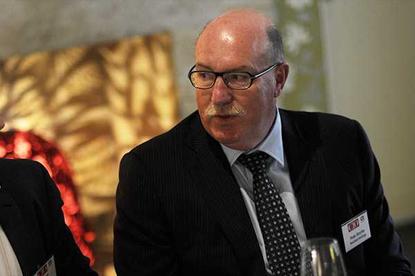Selling the new enterprise architecture - Part 1
- 20 June, 2011 11:22
Simon Page knows all about gambling. As group chief technology officer with gaming giant, Tabcorp, he’s responsible for supporting a broad range of casino, gaming and wagering activities worth $4.2 billion per year. Yet while it may be his company’s business, there’s no room for gambling when it comes to IT: A high degree of regulation and duly conservative management has made technology change a necessary exercise in caution.
This mentality created all the predictable challenges when Page and his team sat down to review the company’s enterprise architecture, which was in need of consolidation, simplification, and flexibility. Virtualisation was going to play a major role in the project — but Page was reluctant to rush headlong into a major architecture migration.
“An infrastructure strategy and assessment was an obvious thing to do, but we thought we should take a couple of steps back before we moved forward,” he recalled, speaking at a recent Cisco user conference about the company’s eventual shift towards a modular virtualisation architecture. But how to manage the change? Page soon hit upon IT Infrastructure Library (ITIL), the hugely popular service management framework that has helped many organisations reconsider how they deliver IT.
Read more in CIO Australia’s Service orientated architecture category
“ITIL is a great example of thinking that has come out of the public sector, and the private sector — hungry for good ideas — has just embraced it,” he explained.
“When you start talking about IT services and service management, the discussion very quickly turns to things that have been talked about in business process outsourcing for some time. It begged the question: ‘What is the role of IT going forward?’ And we got to thinking of the IT organisation as a service broker.”
The new enterprise architecture
A ‘service’, of course, is an abstraction of the underlying functions, systems and policies used to deliver business outcomes. Service-centred IT therefore reflects the need for clarity and commonality of vision between business executives, the CIO, and the enterprise architects (EAs) and other operational staff charged with actually delivering that vision.
You can’t just have a skunkworks [project] in the corner; it becomes a completely different way of thinking
“We haven’t integrated our IT globally as well as we should,” says Westfield CIO Peter Bourke. “We want to take our IT to a more service model, and we think the Cloud is a good point of rationalisation. There are significant cost savings and efficiencies by having a global group.”
The virtual server has become the stem cell of the modern enterprise, an inherently reconfigurable entity that can transform to support nearly any necessary service within the service ecosystem. Like the stem cell, however, it must be guided by a carefully measured and defined genome embedded deep within the business.
Like most things, that genome simply cannot be managed if it is not first understood. Every organisation has an enterprise architecture of some sort, typically the result of IT wending its way organically through the business, with the usual functional and technological silos impeding consistent service delivery.
Planning and executing the transition is often difficult, and the existing enterprise architectures of most organisations simply do not hold up to formal scrutiny. “We have clients who have done external risk or IT audits that reveal their lack of any form of [formal] enterprise architecture represents a risk,” says Mac Lemon, Asia-Pacific managing director of consulting firm, Enterprise Architects.
“It affects how they can govern or control the costs of investment, alignment of IT, ensuring they’re not getting duplication, and developing the architecture. These are the hidden costs that occur due to lack of architectural control, and they’re just not well understood.”
Awareness of enterprise architecture drops rapidly with the size of the organisation, Lemon adds, with small businesses likely to have almost no long-term architecture strategy and businesses of all sizes are struggling to evaluate their current situation. Here, a skilled EA can prove indispensable in sorting out the company’s current and future architectures — helping match them to CIO-conveyed business requirements, without becoming lost in arbitrary technological structures, or strictures.
To help them in their work, many EAs turn to conceptual tools such as the decades-old Zachman Framework — which uses a 35-cell matrix of enterprise architecture parameters to describe any process in a number of different ways suited to different organisational needs.
Others are turning to The Open Group Architecture Forum (TOGAF), a best-practice guide that weighs in at 780 pages. TOGAF certification is serious business and requires a long-term investment in time and energy by EAs, but has become the industry bible when it comes to sharing EA best practices.
An enterprise architecture “is trying to describe the layer of business, data, applications, and technology, and the business they operate,” Lemon explains. “TOGAF ultimately gives a sameness of expectation and approach, and creates a consistent expectation amongst EAs as to how they should operate.”
Yet while such tools are useful, they cannot be applied without a deep understanding of the business. And that, Lemon adds, is still often hard to come by: “It’s only when I understand the business that operates, can I understand the ways to service it. But it has to reflect and create a common understanding of what the business does and, organisationally, who has accountability for it and who doesn’t. And we often find an incredible difference of opinion by business stakeholders as to how the business operates.”
Read Part 2 of Selling the new enterprise architecture.
Follow CIO Australia on Twitter: @CIO_Australia


